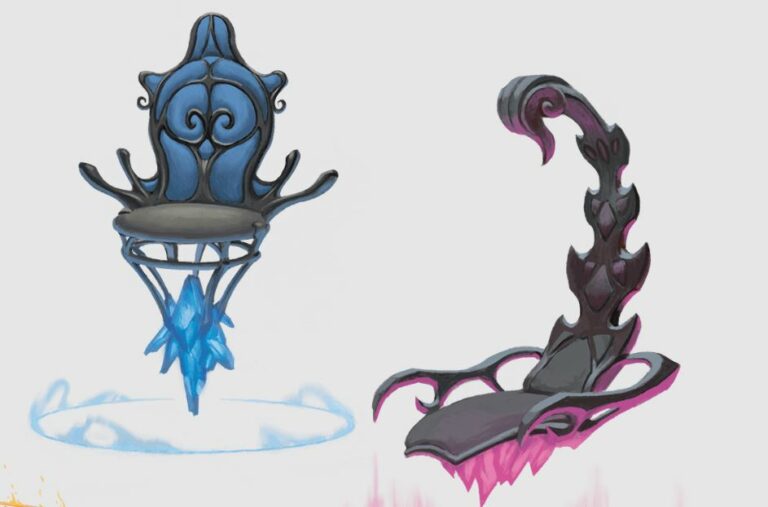Shadow Touched 5E Guide | Pros, Cons, and Builds
Tasha’s Cauldron of Everything embraces the shadows, like a few guides before it. With the Phantom Rogue out, it only makes sense that every class gets the chance to be Shadow Touched. Being graced by the Shadowfell’s magic has changed you… Positively, thank goodness. You have been left with the ability to disappear from sight at-will. Learn how you can use Shadow Touched Feat 5e to your advantage with this guide!

What is Shadow Touched?
- Increase your Intelligence, Wisdom, or Charisma score by 1, to a maximum of 20.
- You learn the Invisibility spell and one 1st-level spell of your choice. The 1st-level spell must be from the Illusion or Necromancy school of magic. You can cast each of these spells without expending a spell slot. Once you cast either of these spells in this way, you can’t cast that spell in this way again until you finish a long rest. You can also cast these spells using spell slots you have of the appropriate level. The spells’ spellcasting ability is the ability increased by this feat.
The Shadow Touched feat increases one mental stat (Intelligence, Wisdom, or Charisma) by 1. It also lets you learn Invisibility, and one 1st level spell from the illusion or necromancy schools. You can cast Invisibility and that spell that you chose once per day. Alternatively, you can spend spell slots to cast them.
Is Shadow Touched Good?
First of all, this is a feat that gives you an Ability Score Improvement. If you have an odd Intelligence, Wisdom, or Charisma score, then this can make it a Modifier Increase. That’s worthwhile!
More importantly, this allows anyone to cast Invisibility. Invisibility is (arguably) the best scouting spell in the game, allowing a creature to approach the frontlines of a battlefield without fear of being seen. There is counterplay, but a lot of that relies on the creature being noticed at all! The ability to cast this great spell once without any sort of spell slot expenditure is almost worth the feat by itself.
But you also get to learn another spell! There are 9 first level spells from the Illusion and Necromancy schools. There are some winners here; Cause Fear, Distort Value, Ray of Sickness, Silent Image… And you can make the other spells work in specific builds! These aren’t the cream of the crop of the Sorcerer/Wizard spell list, but you’ve got a choice to make!
See Our Feats 5E Guide
Downsides to Shadow Touched
Invisibility is available on a ton of spell lists, five to be exact; Artificer, Bard, Sorcerer, Warlock, and Wizard. So, if you have an “arcane” caster in your party, you probably have someone who can cast Invisibility. So… why aren’t they just casting it? Why should your Cleric learn a feat to do something that the Artificer or Wizard should be doing instead?
And, while the 1st level spell can be useful… Let’s be real, 1st level is not where the Illusion or Necromancy schools shine. You’re getting a pretty “fine” spell for this, but is that worth the feat slot?
Potential Builds Using Shadow Touched
I’d say it’s worth the feat slot, on some specific classes. Particularly… Any of them that can’t learn Invisibility! Cleric, Druid, Paladin, or Ranger all have some pretty good reasons to go invisible, especially in less tanky builds. Alternatively, if your Arcane Caster just doesn’t want to learn Invisibility, you can carry their slack. The free spell slot does make casting Invisibility just a bit better, after all! And those classes have trouble getting access to the utility of Illusion/Necromancy schools. On a Rogue, like an Arcane Trickster, this allows you to make one “free” sneak attack per cast. That’s solid! And it might help your round off your Intelligence score if you were lacking beforehand.
Who Should Take the Shadow Touched Feat?
Shadow Touched is one of those feats that could make a lot of sense for a wide range of builds. There is a lot to enjoy here: you get two potentially powerful spells as well as a stat increase to partially offset giving up your ASI. So who benefits the most from taking this?
There are plenty of ways this feat could benefit most classes. For casters, it is always nice to have an expanded list of spells and ways to cast them without using slots. For non-casters, having a bit of magic can open up a lot of doors to an otherwise vanilla playstyle. And the invisibility spell in particular can be useful in countless ways, especially with rogue builds.
There are not really any cases where shadow touch is bad. The question is, when are there better options (the ASI increase or other feats) compared to Shadow Touched? Barbarians, for example, have less use for invisibility compared to other classes. Given their inability to cast while raging, barbarians likely benefit more from increasing their ability scores or taking another feat.
Shadow Touched 5E FAQ
Have questions about how this feat works? Get the answers here.
Are Shadow Touched Spells Always Prepared?
You can treat the spells you select with the Shadow Touched feat as if they are always prepared. They do not count against the total number of prepared spells you have, which is one of the benefits of taking the feat.
What Book is Shadow Touched in?
Shadow Touched is found in Tasha’s Cauldron of Everything.
Conclusions
This is a pretty potent feat! Invisibility is a great spell, and while I’m putting down the 1st level spell slot a bit, it’s still useful. Even just Ray of Sickness can generate some amazing value! While this feat is often unfairly compared to Fey Touched, it is excellent in its own right. So, if you’re desperate for Invisibility for whatever reason, this feat is for you! Although, I personally recommend you have some spell slots first.






